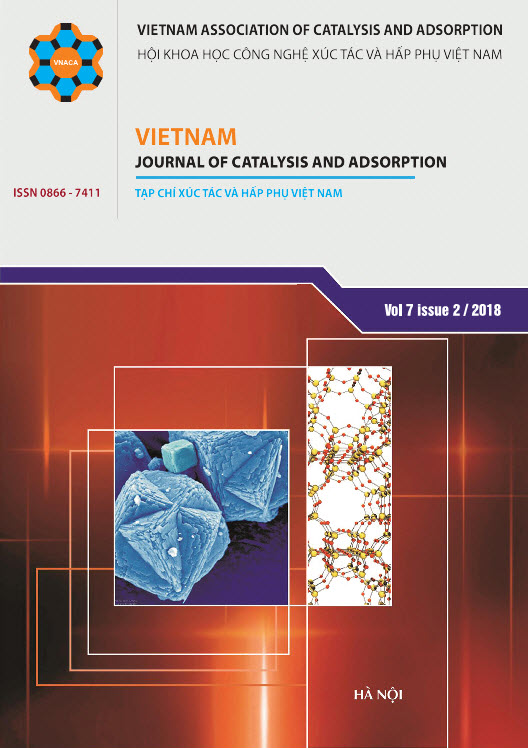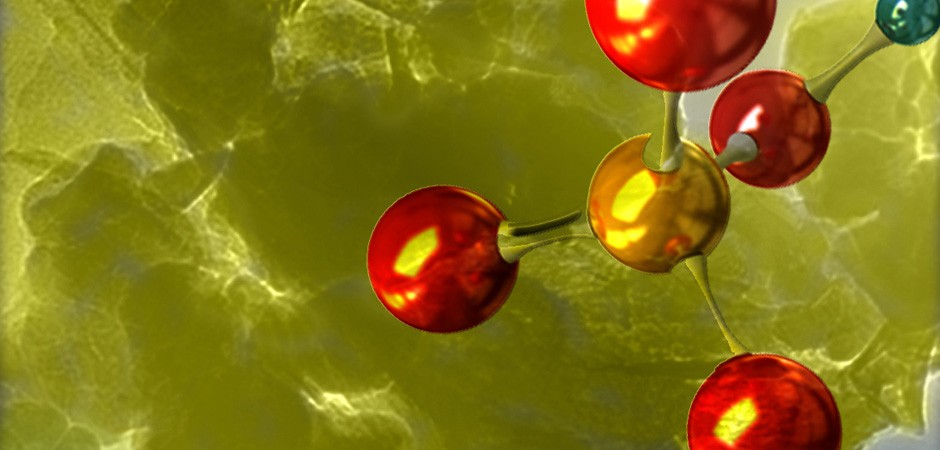- Details
- Published on 01 January 2011
 Volume 7, Issue 2, July 2018
Volume 7, Issue 2, July 2018
ISSN: 0866-7411
In this issue (21 articles)
Download Cover and Category
- Details
- Published on 06 August 2020
Hydropolymer hóa ethylene - một quá trình sản xuất nhiên liệu hứa hẹn của tương lai
Hydropolymerization of ethylene - A future manufacture of fuel production
Nguyen Quang Minh1 This email address is being protected from spambots. You need JavaScript enabled to view it., Dao Quoc Tuy1
1 School of Chemical Engineering, Hanoi University of Science and Technology, Hanoi, Vietnam
ABSTRACT
Converting Gas to Liquid (GTL), along with heavy-oil residue cracking and biomass, is expected to be one of the main trends in fuel supply in the near future. One of the most promising and new research direction is the hydropolymerization of ethylene, which has a great significance thanks to its direct application in the fuel production. This process is practically the same as the Fischer-Tropsch process, but its relatively soft conditions are useful for researching as well as reducing costs for designing and manufacturing devices, process lines. Moreover, the hydropolymerization process also makes use of industrial by-products (ethylene) to produce fuels, which is another advantage to produce fuels from ethylene beside other traditional applications.
- Details
- Published on 06 August 2020
Nghiên cứu điều chế vật liệu nano-ZIF-67 trong môi trường etanol
Study on preparation of nano-ZIF-67 in ethanol
Lê Văn DươngThis email address is being protected from spambots. You need JavaScript enabled to view it., Đinh Quang Toàn, Phạm Thu Hương, Lê Ngọc Dương, Nguyễn Thị Xuân, Ninh Thị Phương, Tạ Ngọc Đôn
Viện Kỹ thuật Hóa học, Đại học Bách Khoa Hà Nội, Số 1, Đại Cồ Việt, Hà Nội.
ABSTRACT
In this study, nano crystal ZIF-67 was successfully synthesized at room-temperature using ethanol as solvent. Several factors affecting the synthesis including solvent type, solvent content were investigated. The synthesized nano crystal ZIF-67 was characterized by different techniques such as XRD, FT-IR, SEM, TEM, BET (N2 adsorption - desorption) and TGA/DTA. The Co2+/Hmim/Ethanol molar ratio of 1:8:276 was determined as the most suitable one for the synthesis of nano-ZIF-67 with large BET surface area of 1437,5 m2/g, small crystal size of 50nm, mesopore size (dmeso) of 30nm and high thermal stablity up to 500°C.
- Details
- Published on 06 August 2020
Nghiên cứu tổng hợp vật liệu hấp phụ từ Bentonit Cổ Định – Thanh Hóa, Ứng dụng xử lý amoni trong nước
Synthesis of adsorbed materials from Bentonite Co Dinh – Thanh Hoa, Application for removal of ammonium in water treatment
Trương Quốc Anh, Mai Văn TiếnThis email address is being protected from spambots. You need JavaScript enabled to view it., Bùi Thị Thư
Trường Đại học Tài nguyên và Môi trường Hà Nội
ABSTRACT
Adsorber was purified synthesized from Co Dinh Bentonite ore, Thanh Hoa by ultrasound vibration method combines deposition, then be modified with the Fe3+ to improve quality and increase the adsorption capacity of ammonium domestic processing. The effect of ultrasonic vibration time, centrifugal velocity and Fe3+ ion denitration ratio were investigated. Characteristic properties of the material were determined by IR, EDX, IR spectroscopy, etc. The specific surface area and adsorption properties of the material were evaluated using the BET method. The maximum adsorption capacity for ammonium in the water is 40.65 (mg / g).
- Details
- Published on 06 August 2020
Mô hình toán và mô phỏng thiết bị phản ứng xúc tác dị thể cho quá trình reforming xăng nặng
Mathematical model and simulation of a heterogeneous catalytic reactor for reforming process of heavy gasoline
Nguyễn Hữu Dương, Vũ Hồng TháiThis email address is being protected from spambots. You need JavaScript enabled to view it.
Bộ môn Máy và Thiết bị Công nghiệp Hoá chất - Dầu khí, Viện Kỹ thuật Hóa học, Đại học Bách Khoa Hà Nội
ABSTRACT
In the petroleum refinery industry, catalytic reforming is a heterogeneous chemical process that aims to convert heavy and medium gasoline into high-quality gasoline. It can convert paraffinic hydrocarbons into fine hydrocarbons as well. The knowledge of the process is very important for calculating, designing and operating a catalytic reforming system in the oil processing industry. This research work establishes a homogeneous simulation model to describe a heavy-duty catalytic reformer based on the use of two major reaction types, the de-hydrocarbon reaction to paraffin and the paraffin hydrocracking reaction. The work provides a set of differential equation of the problem. An algorithm to solve the problem is introduced. The calculation results by using MATLAB will be presented and discussed. From these results the calculation of mass, the height of the catalyst needed can be made.















